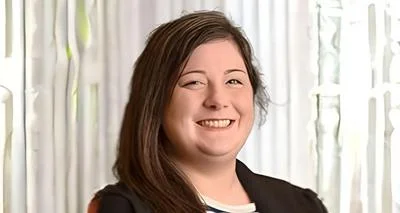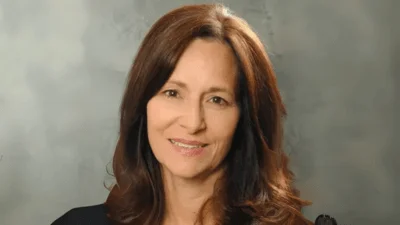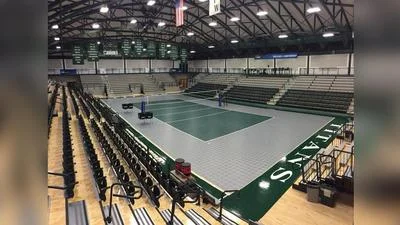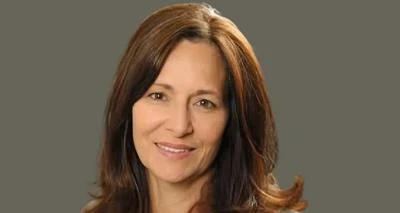For more than a decade, Dr. Antony Joseph has been investigating hearing loss suffered by military members exposed to combat explosions. Joseph, an occupational-research audiologist in the Department of Communication Sciences and Disorders, began researching the topic while he served as an audiologist and commander in the U.S. Navy. Joseph has worked with colleagues at the Naval Health Research Center to compile and analyze the blast-related auditory injury database (BRAID), which comprises information from nearly 17,000 Navy and Marine personnel who experienced combat injuries during the wars in Iraq and Afghanistan.
Joseph’s team has largely been supported by $1.2 million in Department of Defense grants. The researchers want to better understand how to identify, diagnose, and treat blast-related hearing loss in the military. He has also published papers examining the relationship between hearing loss and other health problems, such as post-traumatic stress disorder (PTSD) and insomnia.
Appears InRedbird Scholar: Fall 2022ISU is leading $25 million tutoring program created to close COVID learning gapGetting the jump on disease: Dr. Kelly Laurson measures children’s health to prevent problems laterBug grub: Redbird anthropologist Dr. Gina Hunter investigates past, present, and future of insects as human foodBig vision for tiny particles: Dr. Mahua Biswas creates building blocks of future tech in nano labRedbird media (Fall 2022)ISU researchers receive Innovation Network grantsCross-disciplinary team will host the 2022-2023 Research Speaker Series on Energy for a Sustainable FutureWhat’s next? Dr. Aondover Tarhule answers key questions about Illinois State’s new College of EngineeringInterstellar arithmetic: Undergraduate student research unites theatre and mathInspiring STEM for Chicago high school students aim of $1.3 million NSF grantIan Freeman named Goldwater Scholar in physicsVirtual learning in the palm of your hand: Research team investigates impact of haptic feedbackGraduate student’s virtual lecture series explores how we engage with photographsSchool of IT to host CyberGen Summer CampRead All
Joseph received his Doctor of Audiology at Central Michigan University and his Ph.D. at Michigan State University. He arrived at Illinois State in 2015, where he is now a tenured associate professor.
In the following Q&A, conducted last spring, Joseph discussed his blast-related studies and the impact his research is having on veterans.
How did you get involved in this research on hearing loss due to blasts?
During my Navy career, I had an opportunity to deploy in 2008–2009 and see what service members were complaining most about when they were injured. One of their concerns that rises to the very top is hearing-related issues.
In 2011, I was approached by Dr. Andy MacGregor, and we decided to form a team, which led to development of the BRAID database. The plans for this database were actually to expand it to the entire military, but we were only able to gain access to Navy and Marine Corps audiometric data. It took us about a year and a half to construct the database, and we ended up with almost 20,000 service members who had been exposed to blasts who had deployed to Operation Iraqi Freedom and Operation Enduring Freedom.
While I was stationed in San Diego, I managed what is one of the largest, if not the largest, hearing conservation programs in the military. I saw a lot of data, and that’s where a lot of the research questions came from that we ultimately used in the blast studies, questions about what kinds of audiometric configurations do you get, what things can we do as clinicians to expedite early identification of auditory injuries and health problems associated with blast injury and hearing loss.
“My lab, ISU, and all of us in this community want veterans to feel the love and empathy for people who have been injured by blast as a result of serving the country.”
Dr. Antony Joseph
I saw in one of your studies that 75% of all combat injuries in your database were due to blasts. How does a blast exactly affect somebody’s hearing?
Some of the studies we’ve published have identified that blasts can affect hearing in a variety of ways. It’s dependent on the individual, and it is also dependent on the blast and their orientation to the explosion. It’s dependent on their lifestyle and health, the climate, and how stressed or fatigued they are. The distance from and orientation to the blast wave are important as well. All of these things can determine the outcome of auditory injury when exposed to loud impulsive noises, such as blasts.
When a blast occurs—again, depending on the proximity—there is a very intense but briefly formed sound wave. Some people liken it to a very loud clap, but it has a lot of power to it. And that raw power and heat passes through the body typically. It can damage the peripheral auditory system—from the part of the ear you can see, all the way up to the nerve that funnels sound information to your brain. Blast energy is powerful enough to rupture the eardrum and break apart hair cells in your ear.
The sound wave is massive. It can also be accompanied by a heat wave that passes through the brain tissues. From this, the central and higher system of the auditory mechanism can also be affected.
What we’ve seen is that a large percentage of people do not get an audiometric-threshold hearing loss. So, I do a hearing test, and your result may look as if you’re fine. But the individual is still complaining, ‘I can’t hear clearly.’ A hearing test may look unremarkable, but an auditory problem might be reflected through an electrophysiologic test or an assessment of central auditory processing. And we know that those issues can create problems—hearing background noise and hearing when conditions aren’t really all that good for communication. So, blast exposure can produce problems that cannot be seen in a typical hearing test, but audiologists may need to conduct additional diagnostic tests to examine other facets of the auditory system.
What are the most common hearing injuries that you are seeing from blasts? For example, I saw one of your studies focused on tinnitus (ringing in the ears).
Our research team tends to concentrate on hearing loss and tinnitus. We have a tendency to concentrate on whether or not the hearing loss is affecting the low-pitch range, or the high-pitch range, or a combination of those two. We aim to help clinicians look at the hearing test data, and then determine if the service member needs access to further care. Do they need more definitive evaluation? Do they need to go to a surgeon? And if someone’s ears are ringing, to what extent are they ringing? Is it ringing once a year, once a day? Is it constant? Is it intermittent?
We’re trying to get clinicians better information to be able to manage individuals in a timely fashion. Because we know if we can get to some of these problems early, we can often reduce the effects of a communication disorder, maintaining your ability to communicate with your loved ones, family, and co-workers.
The study you asked about was published in the Military Medicine Journal. One of the things we looked at was tinnitus and self-rated health from individuals who have tinnitus subsequent to deployment and combat blast injury. Those individuals have a tendency to rate their overall health lower than people who do not have tinnitus. So, we realize that if you rate your health lower, we should be concerned about mental health as well. Clinicians should pay attention to individuals who have tinnitus to determine if they need mental health support, if they need other levels of support to cope with it.
One of your studies examined the link between PTSD and hearing loss. Can you explain a little bit about what that study was about and what you found?
In that study, we found an association between PTSD and hearing loss subsequent to a blast injury. Individuals who have hearing loss in both ears after that type of exposure are far more likely to have PTSD than individuals who have no hearing loss or even hearing loss in one ear.
Clinicians need to be aware of the fact that when a service member who is blast-injured has hearing loss in both ears, they should ask themselves, ‘Do I need to be thinking about working them up for PTSD?’ You need to definitely be looking at an evaluation for PTSD and at that patient’s mental health. We published our findings in 2020 in BMC Public Health.
Were you able to discover why there might be a link between those two—hearing loss and PTSD?
There’s quite a bit of things like depression and anxiety that are associated with hearing loss, particularly sudden hearing loss. Likely the case is that if you have hearing loss of both ears, you probably were exposed to a significant blast and exposed to more trauma.
Can you talk about the insomnia paper as well? What did you find?
To further investigate the impact of blast exposure on mental health and sleep, we collaborated with Dr. Rachel Markwald, one of the top investigators of sleep science. We discovered an association between insomnia and hearing shift, which is very interesting.
In terms of a hearing shift and insomnia, you are twice as likely to have insomnia when you suffer a hearing shift in combat. Being exposed to something traumatic, such as a blast, can result in auditory problems, which can contribute to difficulty sleeping. So, it’s not just the event that happened, but it’s the subsequent health issues that come about.
We are recommending that service members who have suffered a hearing shift, as a result of being exposed to blast, should be questioned by their medical providers about their ability to get rest. In most cases, clinicians already inquire about sleep when there’s a tinnitus complaint, but they really need to think about those with hearing shift as well.
Do you think your research is making an impact on veterans who are suffering from hearing loss?
Yes. I do get contacted by a number of physicians, audiologists, and veterans about our work. People get referred to me by other audiologists. And many of them actually want to be a part of our studies.
A plug in for our clinic (Eckelmann-Taylor Speech and Hearing Clinic) here as well. We do see a lot of veterans here. Of course, as you know, ISU is a veteran-friendly campus. That’s one of the things that drew me to ISU as well. We try to help our students get the perspective of a military person and include VA work in their training. I’m hoping our research will continue to get veterans calling and inquiring and wanting to know more about their auditory health.
My lab, ISU, and all of us in this community want veterans to feel the love and empathy for people who have been injured by blast as a result of serving the country. We are trying to learn more, investigate further, and ultimately improve the way our current and future doctors manage their presenting concerns.
Are there any other studies I haven’t mentioned that you would like to talk about?
We published a population attributable risk paper in 2018. In that study, we were the first to show that in a community of individuals who have been blasted, we could attribute about 63–65% of the hearing loss to blast. A service member is twice as likely to get a hearing loss when injured by a blast as opposed to not injured by a blast. They were more than twice as likely to get a high-pitch (high-frequency) hearing loss and twice as likely to get a low-pitch (low-frequency) hearing loss. That study was published in the American Journal of Epidemiology.
We published a report in the International Journal of Audiology in 2020. We tend to think in audiology that all noise-induced hearing losses result in a notched audiogram—where patients have good hearing in the low-pitch range but have hearing loss in the form of a dip in the high pitches. That forever has been a marker for noise exposure, and it still is. But what our study revealed was that blast injury can produce other patterns of hearing loss. This is good clinical information. We try to get clinicians to understand that you shouldn’t rule out a blast-related, noise-induced hearing loss, because the audiometric pattern doesn’t look exactly like one that might have been caused by industrial noise.
What’s next in your research?
Hopefully, sometime this year, we have another publication coming out on tinnitus. We have another paper that we hope will publish this year about who’s going to get a hearing shift in combat settings. We have a predictive model that individuals with more severe hearing loss are at-risk for more hearing shift than those without hearing loss. Specifically, we discovered that there are tones audiologists and physicians need to pay attention to before deploying those with a pre-existing hearing loss. Chances are, if they’re exposed to a blast, they’re going to experience a hearing shift. I’m very excited about that study. We have been able to produce some papers that present some novel and clinically useful data.
Original source can be found here.





 Alerts Sign-up
Alerts Sign-up